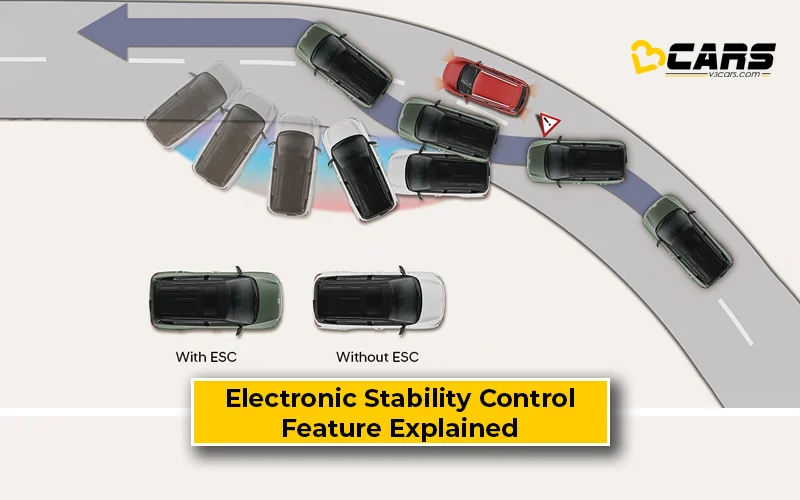What Is Electronic Stability Control? Feature Explained
Electronic Stability Control (ESC), also known as Electronic Stability Program (ESP) or Dynamic Stability Control (DSC), is a critical active safety system in modern cars and SUVs. It’s designed to prevent skidding and loss of control, especially during challenging driving manoeuvres. Let’s explore how ESC works and why it’s a vital safety feature.

What Is Electronic Stability Control (ESC)?
ESC is a computerised system that monitors a vehicle's direction and compares it to the driver’s intended path. If the system detects a deviation, such as a skid or loss of traction, it intervenes to help the driver regain control.
How Does Electronic Stability Control Work?
ESC utilises a network of sensors to monitor various vehicle parameters, including:
- Steering Angle: Measures the driver’s steering input.
- Wheel Speed: Detects the rotational speed of each wheel.
- Yaw Rate: Measures the vehicle’s rotation around its vertical axis.
- Lateral Acceleration: Measures the sideways force acting on the vehicle.
When the system detects a potential loss of control (understeer or oversteer), it intervenes by:
- Applying Brakes: ESC can apply brakes to individual wheels selectively, helping to correct the vehicle’s trajectory.
- Reducing Engine Power: The system can also reduce engine power to limit wheel spin and improve stability.
- Combination of Both: ESC often uses a combination of braking and engine power reduction to effectively correct a skid.
Types Of Skids And ESC Intervention
- Understeer: Occurs when the front wheels lose traction, and the vehicle fails to turn as sharply as intended. ESC applies brakes to the inside rear wheel to help the vehicle turn.
- Oversteer: Occurs when the rear wheels lose traction, and the rear of the vehicle slides outwards. ESC applies brakes to the outside front wheel to help stabilise the vehicle.
Benefits Of Electronic Stability Control
- Prevents Skidding: Significantly reduces the risk of skidding and loss of control, especially on slippery surfaces or during sudden manoeuvres.
- Enhances Stability: Helps maintain vehicle stability in challenging driving conditions, improving overall control.
- Reduces Accidents: Studies have shown that ESC can significantly reduce single-vehicle accidents and rollovers.
- Improves Driver Control: Assists drivers in maintaining control during emergency situations, giving them a better chance to avoid accidents.
How Does ESC Differ From Traction Control?
While related, ESC and Traction Control (TC) serve different purposes:
- Traction Control: Prevents wheel spin during acceleration, improving traction.
- Electronic Stability Control: Prevents skidding and loss of control during cornering and evasive manoeuvres.
Both systems work together to enhance vehicle stability and safety.
How To Turn Off ESC?
Most vehicles have an ESC indicator light on the instrument cluster. This light illuminates when the system is active or when it's actively intervening to prevent a skid.
In some vehicles, ESC can be deactivated via a button or menu setting. However, it’s generally recommended to keep it enabled for optimal safety. In specific situations, like driving in deep snow or sand, temporarily disabling ESC might be necessary to allow some wheel spin for better forward momentum. Always consult your vehicle's owner’s manual for specific instructions.
Note: Check your Car EMI with our - Car Loan EMI Calculator
You can use our Fuel Cost Calculator to see how much any petrol, diesel or CNG car will cost to run based on the latest fuel price in your city.


0 Comments